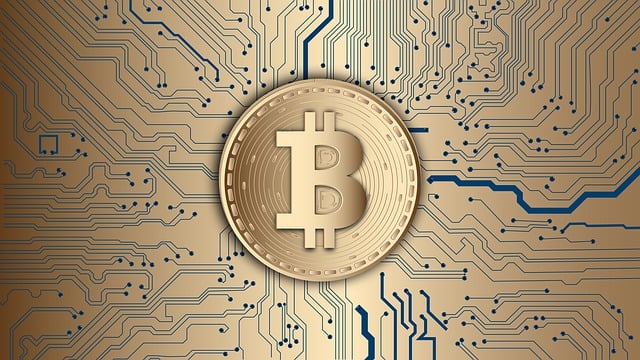The "default" in banking has profound implications for the global financial landscape. When borrowers default, it triggers a chain reaction affecting credit availability, interest rates, and economic stability, potentially leading to conservative lending practices and slower growth. Historical crises like the Great Depression and 2008 Global Financial Crisis highlight the interconnectedness of global banks and the need for robust regulatory frameworks. Bank defaults cause financial strain, impacting both institutions and borrowers globally. Regulatory bodies have responded by enhancing oversight, implementing stricter capital requirements, and fostering international cooperation. Technological innovations such as AI and blockchain are transforming default management, streamlining operations, reducing costs, and stabilizing economic transactions across borders, thereby mitigating the impact on global banking systems.
In the intricate landscape of global banking, understanding ‘default’ is paramount for gauging financial stability. This article delves into the multifaceted concept, tracing its historical roots through global financial crises that have reshaped default management. We explore the profound impact on both individual banks and borrowers, analyze regulatory responses, and scrutinize prevention strategies. Furthermore, we illuminate future trends, including technological innovations, that are revolutionizing default management in today’s dynamic banking systems.
- Understanding the Concept of Default in Banking
- Historical Perspective: Global Financial Crises and Defaults
- The Impact on Individual Banks and Borrowers
- Regulatory Response and Prevention Strategies
- Future Trends and Technological Innovations in Default Management
Understanding the Concept of Default in Banking

In banking, “default” refers to a borrower’s inability or refusal to repay their loan according to agreed terms. It’s a crucial concept that significantly impacts global banking systems. When a borrower defaults, it triggers a series of events that can have far-reaching consequences for both the individual and the financial institutions involved. Banks must then manage the risk associated with these non-performing loans, which often involves provisions for losses and potential legal actions.
The impact of default on global banking systems is profound. It influences credit availability, interest rates, and overall economic stability. In times of widespread defaults, banks may become cautious, leading to tighter lending practices. This can restrict access to capital for legitimate businesses and individuals, potentially slowing down economic growth. Conversely, severe defaults can also trigger regulatory changes and innovations aimed at better risk management and early intervention strategies to mitigate future risks.
Historical Perspective: Global Financial Crises and Defaults

Throughout history, global financial crises have been punctuated by significant defaults—events that have reshaped economies and impacted global banking systems. From the Great Depression in the 1930s to the more recent Global Financial Crisis of 2008, these events have exposed vulnerabilities within financial institutions and economic structures worldwide. During such periods, defaults often lead to widespread panic, causing investors to withdraw funds en masse, further exacerbating the initial crisis.
The ripple effects are profound: banks face liquidity crises, credit markets seize up, and governments are forced to intervene with bailouts or restructuring measures. These historical precedents underscore the interconnectedness of global banking systems and the need for robust regulatory frameworks to mitigate risks and cushion against future defaults, thereby ensuring stability and confidence in the financial markets.
The Impact on Individual Banks and Borrowers

When a bank defaults, it has significant implications for both the individual bank and its borrowers. For banks, a default can lead to severe financial strain, potentially causing liquidity issues and eroding their capital reserves. This can result in a cascade effect throughout the global banking systems, as healthy institutions may become hesitant to extend credit to those associated with the failing bank, creating a broader credit crunch.
Borrowers, on the other hand, face increased risk when their lending institution defaults. Their loans might become due immediately, leading to financial hardship and potential loss of assets used as collateral. Furthermore, borrowers may struggle to access new credit from other institutions, as banks often consider past defaults as a significant credit risk factor, impacting their ability to secure future financing. This ripple effect can have long-lasting consequences for individuals and businesses alike, shaping the overall economic landscape.
Regulatory Response and Prevention Strategies

Regulatory bodies worldwide have been actively responding to default events, implementing measures to mitigate their impact on global banking systems. These strategies often involve enhancing oversight and risk management practices. For instance, central banks may introduce stricter capital requirements for financial institutions, ensuring they maintain sufficient reserves to absorb potential losses. Additionally, regulatory authorities can implement early warning systems, utilizing advanced analytics to identify emerging risks and allow for proactive intervention.
Prevention is a key focus, with regulators encouraging banks to adopt robust risk assessment frameworks and diverse funding sources. Encouraging the use of stress tests and scenario analyses helps institutions prepare for adverse conditions. Furthermore, fostering international cooperation enables regulatory authorities to share insights and coordinate efforts, ensuring a more unified approach to prevent and manage defaults at a global scale, thereby reducing their impact on the overall financial stability.
Future Trends and Technological Innovations in Default Management

The future of default management is being reshaped by technological innovations that promise to revolutionize how financial institutions approach credit risk. Artificial intelligence (AI) and machine learning algorithms are increasingly used for predictive analytics, enabling banks to anticipate potential defaults with greater accuracy. This proactive approach allows for timely interventions and customized solutions to mitigate risks before they escalate. Additionally, blockchain technology is poised to disrupt traditional lending processes by enhancing transparency, security, and efficiency in managing default records, thereby fostering trust among stakeholders.
These advancements hold significant implications for the impact on global banking systems. By leveraging data analytics and smart contracts, financial institutions can streamline their operations, reduce costs associated with defaults, and enhance overall risk management strategies. Moreover, the integration of AI and blockchain technologies has the potential to create a more resilient and interconnected global financial network, fostering stability and facilitating smoother economic transactions across borders.
In conclusion, understanding the concept of default is pivotal for navigating the intricate landscape of global banking systems. Throughout history, financial crises have underscored the profound impact of defaults on both individual institutions and borrowers, necessitating robust regulatory responses. As we look to the future, technological innovations promise to revolutionize default management, enhancing prevention strategies and ensuring stability in a dynamic economic environment. By integrating these advancements, the banking sector can mitigate risks more effectively, fostering a resilient and sustainable financial ecosystem.
